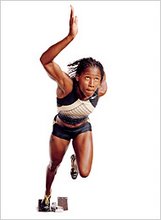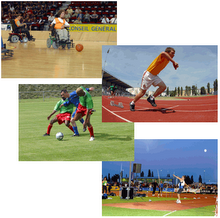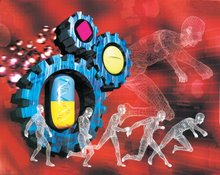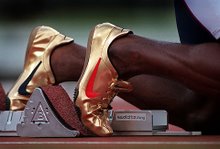
Bones are a wonderful thing. They provide a structural framework upon which humans are able to mechanically interact with their environment. Additionally, some bones function as factories for blood cells. Bones are made up of calcium phosphate, layered in a matrix. As one might expect from the study of mechanical engineering and material science, the size and shape of a bone determines how it handles various loads (stresses). Stemming from this it is commonly misconceived that the skeleton is a fixed structure, like the frame of a house. It is not. One remarkable property of bone is the ability to adapt. Bones are continuously remodeling. Every day, calcium phosphate is removed from some regions and deposited in others -- depending upon the stresses applied to them. There is a limitation to this, though, in that excessive stress results in fracture.
Fractures can occur acutely (e.g., sudden, hard impact) or chronically, from the summation of small forces over a long period of time (e.g., impact from running). This latter mechanism is known as a “stress fracture”. Athletes with stress fractures often notice persistent pain in a localized region, which may also be tender to the touch. As one might expect in runners, the pelvis, femur, lower leg, and foot are common sites for stress fractures to occur. There appears to be a 3 step spectrum of bony injury; bone strain, stress reaction, and stress fracture (in order of increasing severity). The take-home message from this is that early recognition leads to prevention of more serious injury, and thus, faster cure. Since these injuries often sideline a runner for a considerable period of time, a little knowledge about calcium and bone physiology can help runners go a long way on the prevention trail.
The two most important factors to help insure healthy bones in athletes are,adequate dietary calcium,and a properly constructed training program.
The RDA for calcium in males and females, ages 11 - 24 years, is 1200 mg/day. For those 25 years and older, the RDA is 800 mg/day. Unfortunately many adults don’t meet these RDAs. Some foods rich in calcium are, cheese, milk, dark green vegetables, and legumes. It is very important for adolescents and young adults to have sufficient calcium intake because these are the years when bone density is maximized. Later in adulthood bone loss begins. This occurs sooner in women than in men. Starting at age 35 women begin to experience bone loss, which rapidly accelerates after menopause.
A well constructed training program is also important for healthy bone. Since bone responds to training loads (e.g., running, resistance training) by becoming stronger, a gradual build-up over time is preferable to a rapid increase in training volume. Too sudden a jump to heavy mileage is probably the most common error leading to stress fractures. Additionally, women who have lost too much weight via excessive training and have stopped having menstrual periods are at increased risk for stress fractures. Since estrogen protects against bone loss, the disturbance in normal hormonal status leads to accelerated bone loss and poor repair. For the same reason athletes with eating disorders are also at increased risk. The other concern related to bone, later in life, is osteoporosis. Additional factors which increase the chance of osteoporosis are, a sedentary lifestyle, smoking, heredity, and white or Asian race.
Although this overview was necessarily brief, it should serve as a staring point upon which you can begin to assess your skeletal health. For more individual detail, you should discuss these issues with your doctor.














Hiç yorum yok:
Yorum Gönder